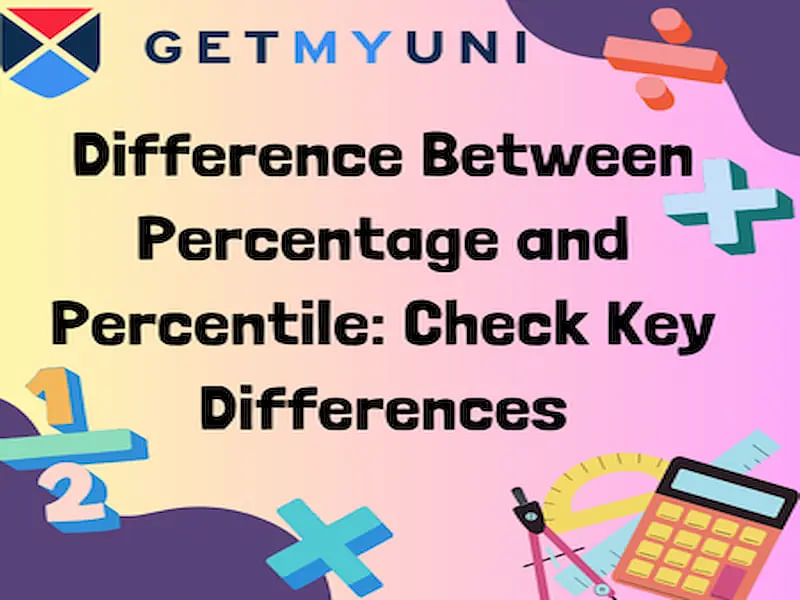When calculating marks for any exam, students often confuse Percentage for Percentile. The main difference between Percentage and Percentile is that Percentage expresses a value as a fraction of 100 while Percentile is used to compare relative values.
Table of Contents
Difference between Percentage and Percentile is that the Percentage is used to represent values out of 100. On the other hand, Percentile is used to compare values to represent ranks. For example, if a student scores 65 marks in English out of 100, their aggregate percentage will be 65%. At the same time, their percentile will be based on the number of students who scored less than 65% divided by the total number of students and multiplied by 100.
When seeking admission into colleges, students are often confused between the two terms. They tend to look only after the Percentage required to be eligible for admission, neglecting the Percentile criteria for rank evaluation.
What is Percentage?
Percentage is a arithmetic concept of a given value divided by the total value and multiplied by 100. Percentage is represented by the symbol “%” and is used to standardize different quantities, fractions, and ratios. Additionally, percentages can be written in decimals and fractions.
For example, if a student scores 85 marks in English subject out of 100, then the student has scored 85% aggregate in English. 85% is the percentage scored by the student in their exam. To calculate the percentage, we have used the following formula:
[Given value / Total value] * 100 = Total Percentage (%)
Apart from calculating marks, percentages can also be used to calculate the following:
- Measuring discounts and sales
- Understanding financial reports
- Representing tax rates
- Analyzing survey results
Also Read: What is the Difference Between College and University?
What is Percentile?
While percentage is an arithmetic concept, percentile is a statistical concept, representing a value below which the given percentages fall. Percentile is used to compare two or more percentages and provide a ranking.
For example, a student securing the 85th percentile in the math exam means that their score is above 85% compared to other students. To calculate the percentile use the following formula:
[(Number of students who scored lesser marks than given value) ÷ (Total number of students)] × 100
Percentile is usually used to calculate the following:
- Comparing scores of competitive tests
- Identifying individuals who performed really well or poorly
- Analyzing performance trends over long periods of time
- Learning about the distribution of income in a population
Also Read: Education System in India: Everything You Need To Know
What is the Difference Between Percentage and Percentile?
Now that you have a basic understanding of percentage and percentile, let’s understand the difference between the two. Refer to the following table to learn about the difference between percentage and percentile in detail:
|
Differentiators |
Percentage |
Percentile |
|
Definition |
A proportion of the whole is represented as a fraction of 100. |
A specific value of data below which a certain percentage of observation falls |
|
Unit of Measurement |
Percentage (%) |
- |
|
Quartiles |
Not related directly |
Used to determine quartiles |
|
Representation |
Represented by % symbol |
Represented by “th” (e.g. 50th) |
|
Form |
Proportion which is multiplied by 100 |
A specific data point |
|
Basis |
Based on the whole sample |
Based on the ranking of data points |
|
Context of Use |
Arithmetic |
Statistical |
|
Distribution Reliance |
Independent of the distribution of data |
Depends on the distribution of data |
Also Read: The Benefits of Joining Student Organizations on Campus























POST YOUR COMMENT